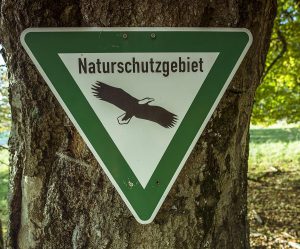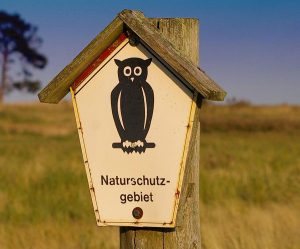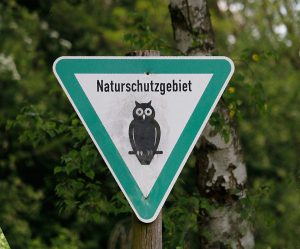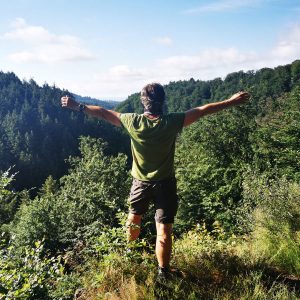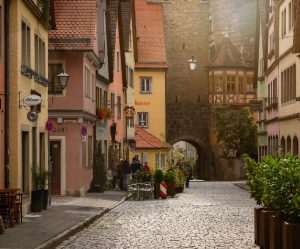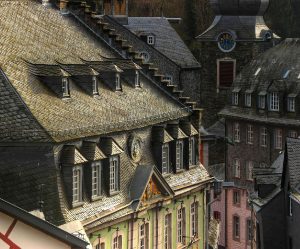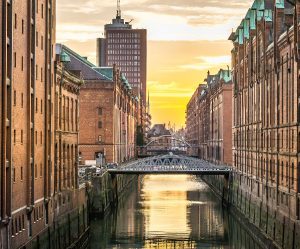INTERESTING FACTS ABOUT GERMANY'S THRUHIKING TRAIL
GOOD TO KNOW

LONG-DISTANCE HIKING IN GERMANY? This is what you should know
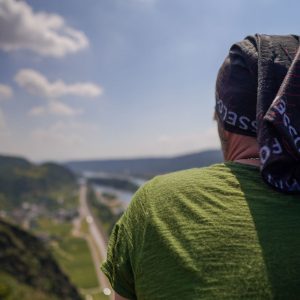
GERMANY IS A HIKING NATION
Insgesamt gibt es in Deutschland ein Wanderwegenetz von etwa 300.000 km. Hiervon haben rund 550 Wanderwege ein gutes Wegeleitsystem und wurden dafür mit dem Deutschen Wandersiegel ausgezeichnet. Jeder zweite Deutsche wandert – in welcher Ausprägung auch immer. 20 % der Deutschen geben an, dass sie sogar häufig wandern.
THE MOST IMPORTANT FACTS ABOUT NATURE RESERVES AND NATIONAL PARKS
There are around 8,830 nature reserves in Germany. Taken together, this corresponds to 6.2 percent of Germany's surface area. Looking at the individual states, North Rhine-Westphalia has the most nature reserves (3,185) and the largest total area. There are currently 16 national parks in Germany. Special rules apply in Germany's nature reserves and national parks:
✅ In German nature reserves, there is a trail ban. This means that visitors may only use the paths marked for hikers.
✅ In principle, wild camping and bivouacking is expressly prohibited in nature reserves and national parks. If you nevertheless spend the night in one of these protected areas and are caught, then you can expect heavy fines. The same applies to spending the night in refuges that are located in a protected area that has been signed against.
✅ Do not interfere with nature, no barbecues, fires, noise or parties. Do not chase, pet or try to photograph wildlife at close range. Always take your own garbage with you, a behavior that should be self-evident for long-distance hikers even outside protected areas
✅ Flying drones in the nature reserve is not allowed according to the drone ordinance. Without a permit, overflight in these areas is prohibited.
The following signs mark nature reserves in Germany:
⚠ You can find the “sea eagle” in the green triangle (whose tip points downward) in the federal states: Baden-Württemberg, Bavaria, Hamburg, Hesse, North Rhine-Westphalia, Rhineland-Palatinate and Saarland. Thus, this symbol is valid for almost the entire NST.
⚠ The “Kretschmann Owl” in the yellow, trapezoidal pentagon (whose tip points upwards): Brandenburg, Mecklenburg-Western Pomerania, Saxony, Saxony-Anhalt (but on a white rather than yellow background), Schleswig-Holstein, Thuringia.
⚠ Own owl logo in green triangle: Bremen, Lower Saxony
GERMANY NO LONGER HAS ANY REAL WILDERNESS.
WHERE DO YOU STAY OVERNIGHT ON A GERMAN LONG-DISTANCE HIKING TRAIL?
Along the many hiking trails in Germany, there are a lot of more or less spacious refuges that are suitable for an overnight stay. Spending the night in these huts is now widely tolerated outside of nature reserves. Unfortunately, wild camping, i.e. spending the night with a tent, is prohibited in almost all areas in Germany. However, the reality is that many local hikers in Germany do wild camp, but away from nature reserves and civilization. If you pitch your tent late and leave early, you won't get into trouble in most cases. However, in Germany, things are changing for the better. There are now many trekking sites in the countryside that can be used legally. Furthermore, there are many campsites, youth hostels, hotels and privately offered accommodation in Germany. In summary, it is also possible in Germany to complete your thruhike close to nature.
GERMANY - A CULTURAL AND HISTORICAL JEWEL IN THE HEART OF EUROPE.
Whether natural attractions, landscapes, buildings, parks, or urban areas. The people, the language and the traditions make a trip through the German cultural landscape a unique experience. Germany is known as the land of poets and thinkers, and its architecture has features from a wide variety of eras. Antiquity, Gothic, Romanesque, Renaissance, Baroque, Classicism, Historicism, everything can be found here. The palaces, castles, cathedrals and monuments best tell the story of Germany. Then as now, it plays a key role not only in the history of Europe.
AWAY FROM HIKING - THESE FACTS ABOUT GERMANY ARE REALLY INTERESTING!
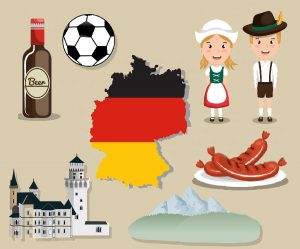
▶ English is the first foreign language in Germany and is spoken more or less well by almost everyone.
▶ Germany’s coast is 1517 mi long.
▶ In Germany there are estimated over 25,000 castles & palaces.
▶ Zugspitze in the Alps is the highest mountain in Germany with a height of 9717 ft.
▶ The Eifel is the largest volcanic area in Central Europe.
▶ The Rhine is the longest river in Germany.
▶ There are thirty-five dialects of the German language.
▶ There are over 1,500 different beers in Germany.
▶ Germany borders nine other countries. No other European state has as many neighbors as the Federal Republic.
▶ There are more football fan clubs in Germany than anywhere else in the world.
▶ The oldest university in Germany is located in Heidelberg; it was founded in 1386.
▶ The first printed book was in German.
▶ There are over 300 different types of bread and over 1,000 types of sausage in Germany.
▶ University education in Germany is also free for international students.




